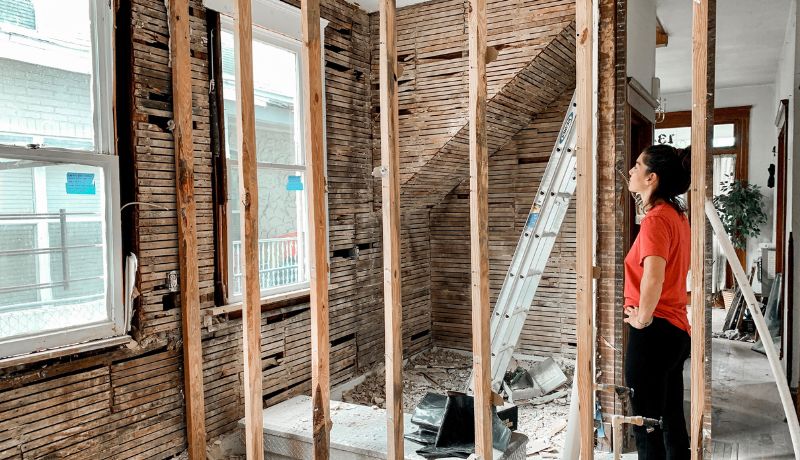Are you looking for ways to improve your web design skills? We've compiled a list of 13 pointers to assist you in your creative development.
You can always improve your craft as a web designer, whether you're just starting out or have created dozens of websites.
Here are 13 pointers to help you improve your design skills and work.
Avoid hectic color schemes-
It's easy to go overboard with color when there are so many wonderful shades and hues available. Despite the fact that bright and bold color schemes are a staple of many designers' aesthetics when too many colors are used too close together, the visual noise created overwhelms the rest of the web design.
Stick to a simple color scheme with a neutral background. Colors on call-to-action buttons, menu items, and other design elements stand out against a neutral background, ensuring that they get the attention they deserve. A simple white, black, or neutral background is sometimes all you need.
This website for hairstylist Emi Styles, created in Webflow, is an excellent example of how a simple color scheme can convey a sense of calm and order. Read up on color theory to better understand how to use color in your own web design. It will help you make better decisions about your own color schemes.
Put some thought into the images you see-
The photos used in a web design layout have a significant impact on the overall appearance and feel of a website. Even the most brilliant designs can be ruined by poorly shot images with fuzzily focused focus and a shaky composition. Generic stock photos can deplete a design's life, leaving it flat and uninspiring.
Adding high-quality photos to your designs is a simple way to improve them.
Also, make sure that the images you choose are appropriate for the content with which they'll be used. If a photo doesn't seem to belong in the section it's being placed in, you may need to replace it with one that does.
Last but not least, pay attention to the file types you're working with. Understand the distinction between a JPG and a PNG. The right file types can make a big difference in how quickly your pages load.
Learn about SEO-
We understand that you didn't get into web design to be bothered by search engine optimization. However, the way you put a website together can have a big impact on SEO.
A few things you should know about search engine optimization as a web designer include:
- How to use h1>, h2>, and h3> header tags correctly
- How the slug — the part of a link that identifies a specific page — affects organic search rankings
- How to optimize images for faster loading times and a lower bounce rate — the percentage of visitors who only look at one page on your site before leaving without taking any action.
Use Responsive Design-
There are a variety of devices available, each with a different screen size. No matter how someone accesses your web design, it should provide a consistent experience no matter what device they're using. Instead of wasting time on overly complex animations and hover effects that may or may not work on all devices, spend that time improving the UI and UX for everyone.
Your website will be user-friendly and offer an optimised experience across desktop and mobile devices if you follow the principles of responsive design.
Keep typography consistent-
When we sit down to read a book, we expect every page to be in chronological order. The text will be the same size, spaced perfectly, and formatted in the same way. This sense of coherence keeps us engaged, allowing us to read uninterruptedly through the pages of a book.
In the same way, the typography in a web design needs to be orderly and consistent. From one page of a website to the next, headers, body text, links, and other text must be styled in the same way. Padding, line spacing, size, color, and weight should all be the same for the same type of content.
Keep Diversity and Inclusion in mind-
A wide range of backgrounds, ethnicities, genders, abilities, and ages are represented on a home page. Being a good web designer entails providing a pleasant user experience for all. Make sure that the photography and character illustrations you choose represent people from various walks of life.
Define who you are as a designer-
Designers frequently have multifaceted skill sets that include UI, UX, and other aspects of web development. When working on projects, a web designer rarely has a singular focus.
However, because there are so many different aspects to design, mastering them all is an impossible task. It's critical for designers to pursue aspects of design that excite and interest them personally. Good designers understand that specialization distinguishes their work and makes them more appealing to potential clients.
Though many designers find themselves bouncing from one type of project to the next early in their careers, finding a niche becomes easier with time, growth, and introspection.
To begin, determine which types of businesses or clients make you the happiest. If you're a techie, this is the place to be.
Your artistic aesthetic is also a part of defining yourself as a designer. Whether you prefer meticulously crafted minimalist designs or prefer to push the boundaries with abstract and conceptual design, make sure you have a distinct design voice.
Knowing who you are as a designer makes it easier to locate projects and people with whom you want to collaborate. It also allows you to create a targeted LinkedIn profile and portfolio, allowing potential clients to quickly recognize your skills.
Mentor a designer-
Being a mentor isn't just a great way to give back and help out an aspiring designer; it can also help you improve your own design critique.
Mentoring entails more than just providing website design advice. It entails being able to assess a problem and explain why it isn't working, as well as the steps that can be taken to improve it. It will be easier for you to evaluate your own designs if you pay attention to someone else's work and exercise the analytical part of your brain.
Write case studies-
Case studies should be included in every web designer's portfolio website, but many fail to do so. Case studies can help you in a variety of ways, despite the fact that they take some time and effort.
Case studies are extremely beneficial to a portfolio. Visitors to your website get a closer look at your process, see how you solve problems and gain a better understanding of who you are as a designer.
Taking a more detailed look at your work as a web designer can also help you understand what you're doing well and where you can improve. Case studies serve as a detailed record of your progress and serve as a detailed archive of your work.





![Top 5 Best Ways to Create Your Own Cartoon Character [For Non-illustrators] Top 5 Best Ways to Create Your Own Cartoon Character [For Non-illustrators]](https://www.chattycathy.blog/uploads/img/632d545cdf266.jpg)
